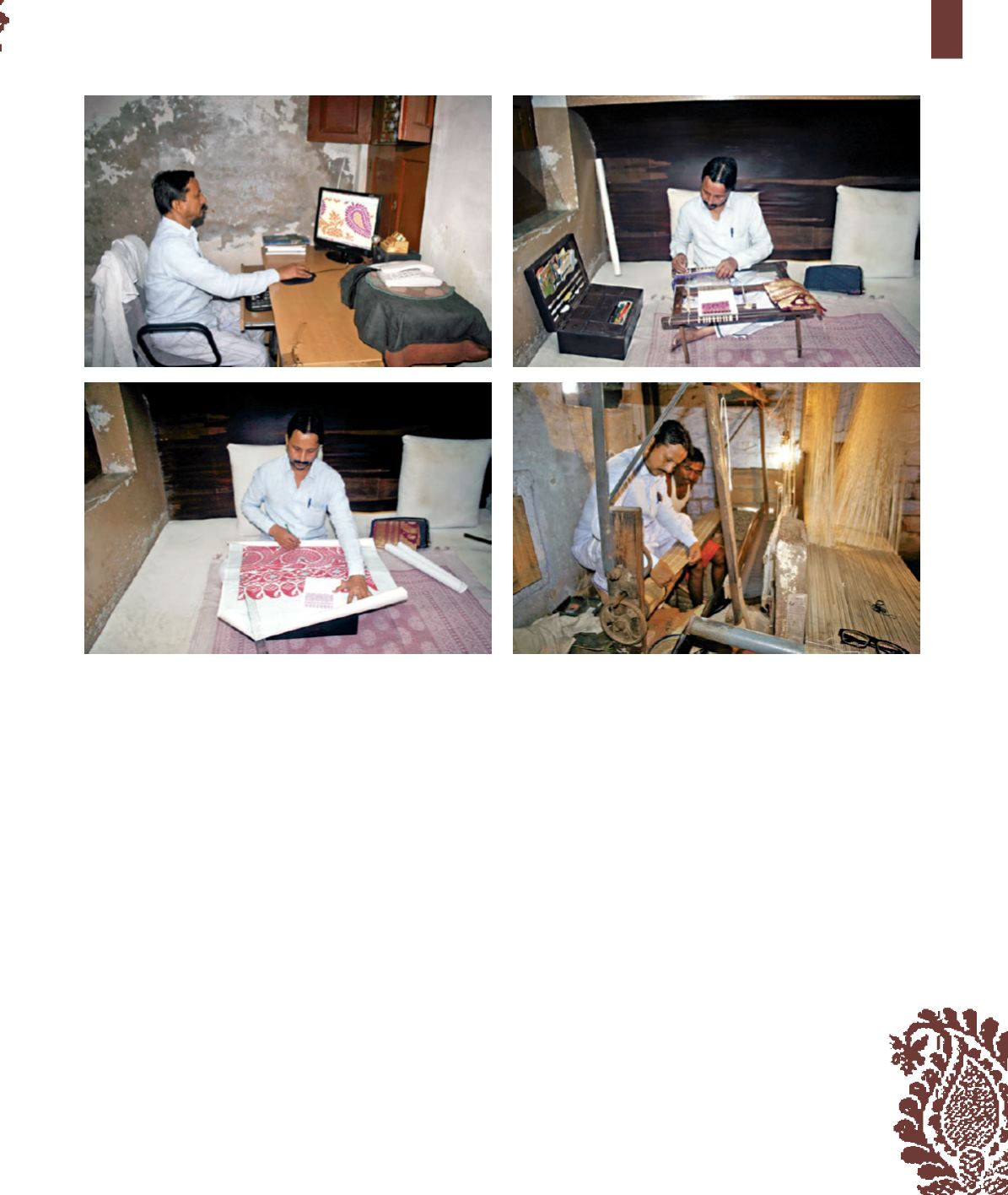
97
focused upon. However, if the old craft has to
be achieved then the old techniques have to be
followed. If we want large motifs or different
motifs placed next to each other in a weave then
it is paramount to use the old Jala technique.
Today, before starting to weave a particular
textile, importance is given to the price the
textile is going to get and the time needed for it
instead of creating an exceptional weave.
Lots of complications are faced nowadays with
handlooms and we have to change our attitude
towards them. In India, we have three seasons.
The weaving of cloth that has started in winter
will face a lot of problems when summer sets
in. In the rainy season, there is a change in the
cloth texture due to moisture and also some
parts of the loom do not work smoothly.
Weavers have to put in a lot of effort to weave
on the traditional Jala loom. If the remuneration
is not forthcoming why should they put in
the effort?
Changing Fashions
Today, there is a change in the minds of the
people. In the wave of fashion, the choice of
clothes and the mode of dressing have also
changed. Thus we weavers have to adjust
our expertise according to the budget and
requirements of the customers. Today, hand-
woven or machine-woven as well as silk yarn or
synthetic yarn does not have meaning to most
customers as long as the piece is attractive.
A few weaving families are contributing to save
the old craft. Because of these few weavers, our
old heritage is saved. But the loss of interest
in handlooms by young weavers is directing
it towards its fall. The new generation would
rather study in college and get a job in a city
than weave on a handloom. In society, things
change in all sectors, but the need for old
things persists. If the old designs cannot be
done by old methods then they are replicated
by different methods. These replicas may look


